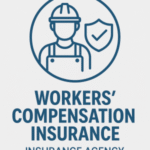As the landscape of home health care continues to evolve,agencies are faced with the challenge of carefully managing operational costs while ensuring quality patient services. Among these expenses, workers’ compensation insurance stands out as a critical, yet frequently enough complex, budget item. Forecasting next year’s workers’ comp budget is not merely about crunching numbers; it requires a thoughtful blend of data analysis, industry insight, and an understanding of workforce dynamics unique to home health environments. This article delves into the art and science of projecting workers’ compensation costs for home health agencies, offering practical guidance to help leaders prepare financially for the year ahead.
Table of Contents
Understanding Key Cost Drivers in Workers’ Compensation for Home Health Agencies

Effective budget forecasting begins with a deep dive into the factors that escalate workers’ compensation expenses in home health agencies. Among the most impactful are claim frequency and severity. Agencies with higher injury reports or more severe claims will naturally face steeper premiums. Other contributors include the workforce size and employee turnover rate. High turnover can increase costs due to recruitment, training, and a temporary rise in workplace errors or injuries as new staff acclimate.To provide a clearer snapshot, consider this simple comparison of common cost drivers:| Cost Factor | Impact Level | Mitigation Strategy |
|---|
| Claim Frequency | High | Safety Training & Protocols |
| Claim Severity | High | Prompt Medical Intervention |
| Turnover Rate | Medium | Employee Engagement Programs |
| Workforce Size | variable | Optimized Staffing Levels |
Analyzing Historical Data to predict Future Budget Needs
Delving into past workers’ compensation claims offers invaluable insight when projecting future expenses. By meticulously examining trends such as the frequency of claims, the nature of injuries, and the average claim costs over several years, home health agencies can spot patterns that inform smarter budgeting decisions. For example, if data reveals a rising number of slip-and-fall incidents during winter months, it might indicate a need for heightened safety protocols and an associated budget increase. Additionally, understanding the seasonality and operational changes that affect claim rates can help agencies allocate funds more efficiently throughout the fiscal year.Historical data analysis also facilitates the identification of *outliers* and *cost-driving factors* that might or else skew budget forecasts. Consider the following key elements to include in yoru review:- Claim severity trends: have the average costs per claim increased or decreased?
- Employee role risk factors: Which job categories are incurring the most claims?
- External influences: Regulatory changes, new safety policies, or regional economic shifts.
| Year | Reported Claims | Average Cost per Claim | Total Workers’ Comp Spend |
|---|
| 2021 | 45 | $5,200 | $234,000 |
| 2022 | 50 | $5,500 | $275,000 |
| 2023 | 52 | $5,800 | $301,600 |
Incorporating Risk management Strategies to Control Expenses
Effectively managing risk plays a pivotal role in controlling workers’ compensation expenses, especially within the dynamic environment of home health care. By proactively identifying workplace hazards and implementing tailored safety protocols, agencies can shield themselves from costly claims and operational disruptions.Central to this approach is fostering a culture of safety awareness among staff through regular training sessions and open communication channels that encourage reporting near-misses and potential risks before they escalate.Integrating technology and data analytics further enhances risk management efforts. Utilizing incident tracking software and predictive analytics enables agencies to pinpoint trends and predict high-risk scenarios, allowing for strategic interventions. consider adopting the following best practices:- Complete employee onboarding focused on safe handling and patient care techniques.
- Regular workplace audits to identify and correct environmental hazards.
- Wellness programs aimed at reducing employee fatigue and stress.
- Ongoing review and adaptation of risk management policies based on incident data.
| Risk Factor | Preventive Strategy | Expected Impact |
|---|
| Slips & Falls | Regular home safety inspections | Reduced incident rate by 30% |
| Muscle Strain | Ergonomic training & equipment | Lowered claim frequency |
| Exposure to Infectious Diseases | Updated PPE protocols | Enhanced employee health protection |
Practical Steps for Accurate and Adaptive Budget Forecasting
Effectively preparing a workers’ compensation budget for home health agencies requires combining historical data with real-time insights to create a dynamic forecasting model. Begin by gathering past claims data, average medical costs, and injury frequency rates, then adjust these figures to reflect industry trends and potential changes in workforce size. Use scenario analysis to anticipate variations in claim severity, and include contingency buffers to handle unexpected cost spikes. Employing software tools that integrate with your agency’s human resource and payroll systems can automate data collection, reducing errors and improving adaptability throughout the fiscal year. Another critical consideration is consistently monitoring external factors such as regulatory changes, local labor market conditions, and advances in workplace safety practices. Establish a review calendar to update your forecast quarterly, allowing for adjustments based on new information or shifts in claims patterns. Prioritize transparency by presenting budget forecasts in clear, concise reports that highlight key drivers and assumptions.For example, use a simple, well-structured table like the one below to communicate forecast components effectively:| Budget Category | Baseline cost | Adjustment Factor | Forecasted Cost |
|---|
| Medical Claims | $120,000 | +5% | $126,000 |
| Lost Time Benefits | $80,000 | -3% | $77,600 |
| Legal & Admin Costs | $30,000 | +0% | $30,000 |
| Total | $230,000 | | $233,600 |
- Leverage automation: to continuously refresh forecasting inputs.
- Engage cross-functional teams: for well-rounded budget insights.
- Incorporate feedback loops: for iterative improvements every quarter.
Q&A
Q&A: Forecasting Next Year’s Workers’ Comp Budget for Home Health Agencies
Q1: why is forecasting the workers’ compensation budget crucial for home health agencies?
A1: Home health agencies operate in a dynamic environment where employees face various risks-from patient handling to driving between appointments. Accurate forecasting of the workers’ comp budget ensures these agencies have adequate coverage and financial resilience to manage potential claims without disrupting service delivery or cash flow.
Q2: What are the primary factors impacting workers’ comp costs in home health care?
A2: Key factors include the frequency and severity of workplace injuries,the agency’s safety protocols,employee training programs,state-specific insurance regulations,and claims management efficiency. Additionally, external elements like changes in healthcare laws or epidemic outbreaks can influence the cost landscape.
Q3: How can historical claims data be used in the budgeting process?
A3: Historical claims data reveals patterns in injury types, claim frequency, and associated costs. By analyzing this data, agencies can identify trends-such as spikes in slipping incidents during winter months-and adjust budget forecasts accordingly. This allows for more precise allocation of funds to anticipated claim payouts.
Q4: What role does risk management play in forecasting workers’ comp expenses?
A4: Effective risk management reduces the likelihood and impact of workplace injuries. By implementing targeted safety training and ergonomic interventions, agencies can lower claim incidence and severity. This proactive approach not only improves employee well-being but also enables more optimistic, yet realistic, budget forecasts.
Q5: Are there insurance industry trends that home health agencies should consider?
A5: Yes. Premium rates can fluctuate based on broader economic conditions, insurer underwriting standards, and statewide workers’ comp reforms. Agencies should stay informed about these trends and maintain open communication with thier insurance brokers to anticipate potential premium adjustments.
Q6: How can home health agencies handle unexpected spikes in workers’ comp claims?
A6: Establishing a contingency fund within the budget provides a financial buffer for unforeseen claim surges. Additionally, continuous monitoring of claims and early intervention strategies can mitigate claim costs before they escalate, helping keep the overall budget on track.Q7: What tools or resources can assist in accurate workers’ comp budgeting?
A7: Budgeting software with analytics capabilities, industry benchmarking reports, and actuarial services can enhance forecast accuracy. Engaging consultants who specialize in home health workers’ comp can also provide tailored insights that reflect the agency’s unique risk profile.
Q8: How often should agencies revisit their workers’ comp budgets?
A8: Workers’ comp budgets should be reviewed at least quarterly to incorporate new claims data, regulatory changes, and operational shifts.Regular reviews enable timely adjustments so the agency remains financially prepared throughout the year.
Q9: Can employee involvement improve workers’ comp budget outcomes?
A9: Absolutely. Encouraging employees to participate in safety committees and report hazards promotes a culture of prevention. This leads to fewer accidents and claims, directly contributing to more stable and possibly lower workers’ comp expenses.
Q10: What’s the ultimate goal of forecasting the workers’ comp budget for home health agencies?
A10: The ultimate goal is to balance financial preparedness with operational sustainability-ensuring the agency can protect its workforce and manage costs effectively, thereby maintaining high-quality care for clients without unexpected financial strain.
Concluding Remarks
As the calendar turns and agencies look ahead, forecasting next year’s workers’ comp budget is more than just a numbers game-it’s a strategic compass guiding both care quality and financial stability. By blending careful analysis with an understanding of industry trends, home health providers can craft budgets that not only protect their teams but also empower them to deliver compassionate care. In this dynamic landscape, foresight isn’t just an advantage; it’s a necessity for success. Planning thoughtfully today paves the way for a safer,stronger tomorrow.
“This content was generated with the assistance of artificial intelligence. While we strive for accuracy, AI-generated content may not always reflect the most current information or professional advice. Users are encouraged to independently verify critical information and, where appropriate, consult with qualified professionals, lawyers, state statutes and regulations & NCCI rules & manuals before making decisions based on this content.”











